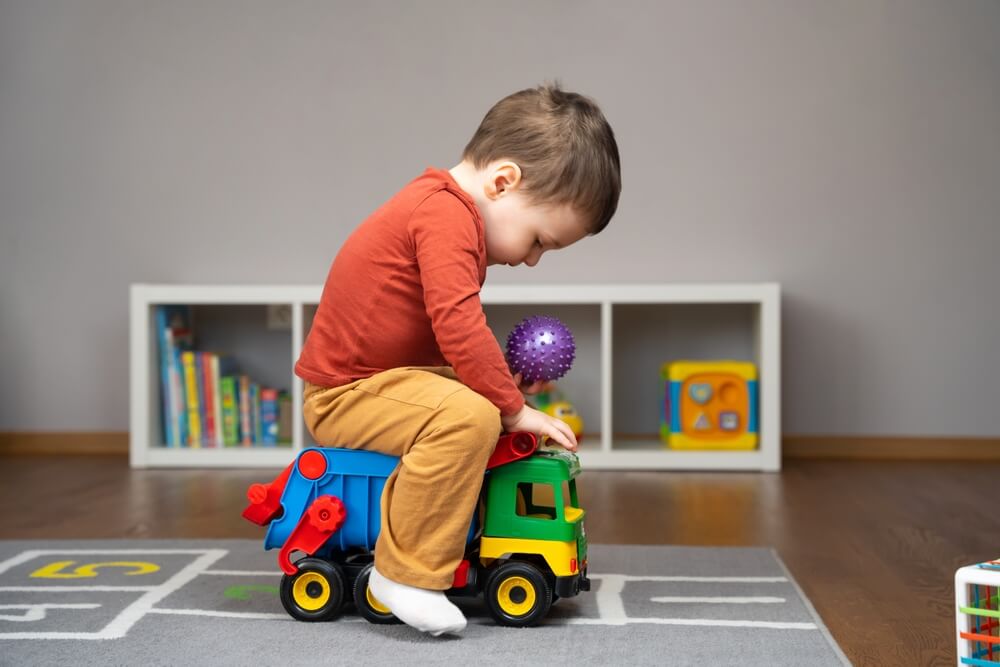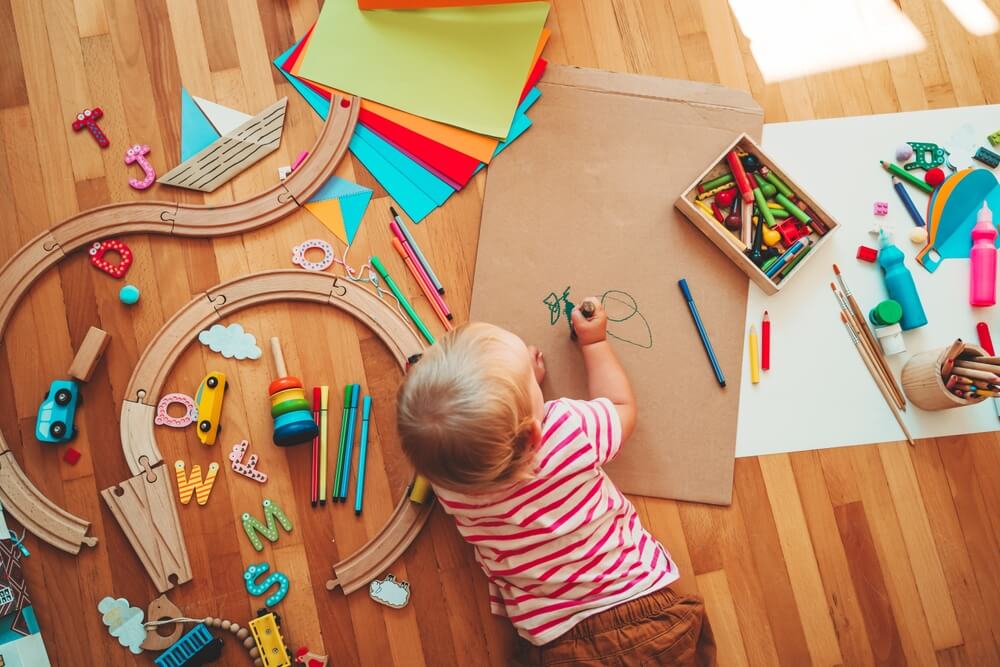
Child Development Stages: What Every Parent Needs to Know (and When to Ask for Help)


As a parent, you’re closely tuned in. You notice every new word, every smile and every small change. You also notice when something feels different.
Maybe your child isn’t speaking as much as other children their age. Maybe they avoid eye contact, repeat certain actions or struggle with changes in routine. These signs can be hard to understand—and even harder to talk about.
Rest assured, you don’t have to figure it all out by yourself.
Every child’s journey is unique, and as they grow, they pass through a series of important child development stages. These stages offer helpful insights about how your child is learning, moving and experiencing the world.
Understanding the developmental stages your child is navigating—and when to seek help—can help you set the foundation for your child’s future well-being.
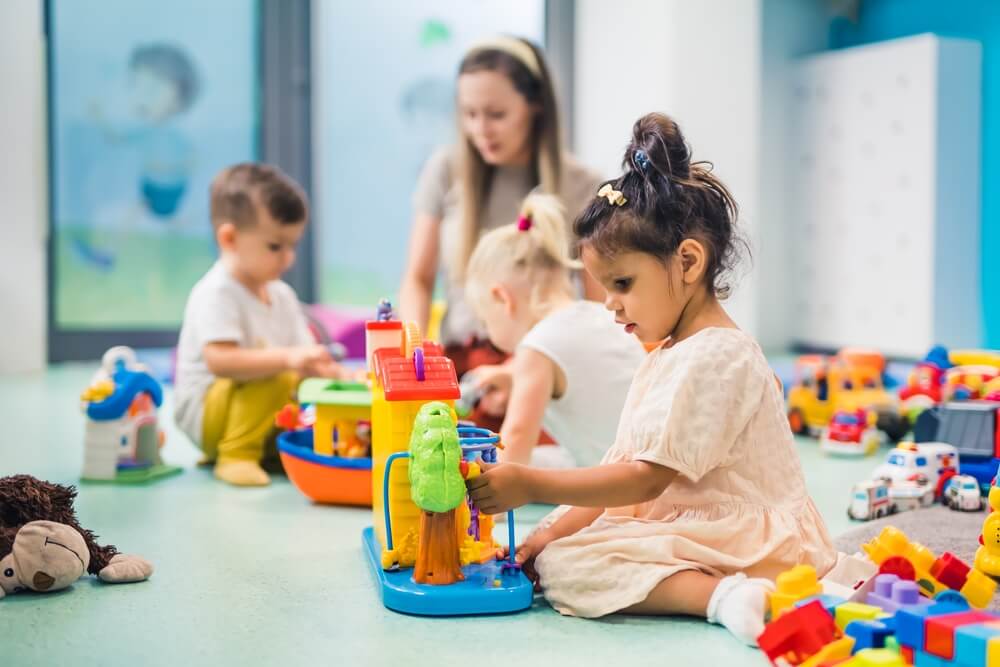
The Pillars of Development
Child development is the way children grow and change from babies—how they move, think, talk and manage their feelings.
According to Nelson Essentials of Paediatrics, doctors often look at these changes in five main areas, which can overlap and affect each other:
- Physical (gross motor) development: The refinement of movement, coordination and strength, from reflexes to purposeful control
- Fine motor development: Small, precise movements using small muscles (fingers, hands) for tasks such as writing or picking up objects
- Language development: Understanding and using words to communicate needs, thoughts and feelings
- Cognitive development: The expanding capacity to learn, think and problem-solve
- Personal-social development: Building relationships, managing emotions and developing self-awareness
Children grow and learn in their own way, but each new skill helps build the next. For example, when your baby learns to sit or crawl, they can explore more, and this exploration helps their brain and language skills grow. In the same way, simple interactions like smiling, babbling and responding to your voice help your child learn to communicate and connect emotionally.
Key Developmental Milestones by Age Group
| Development Area | Infancy (0–12 months) | Toddlerhood (1–2 years) | Preschool/Kindergarten (3–6 years) |
| Gross Motor (Movement & Strength) | Moves head side to side, rolls over, sits without help, pulls to stand, takes first steps | Walks steadily, begins to run and climb with confidence | Runs, jumps, hops, pedals a tricycle, improves balance |
| Fine Motor (Hand & Finger Skills) | Grasps toys, transfers objects, picks up small items with fingers | Stacks blocks, scribbles, kicks a ball | Draws shapes and people, uses scissors, begins to write letters |
| Cognitive (Thinking & Learning) | Explores objects with hands and mouth, tracks movement | Understands “today,” begins problem-solving | Understands “yesterday” and “tomorrow,” learns numbers and basic logic |
| Language (Understanding & Talking) | Responds to sounds, coos, babbles, says “mama” or “dada” | Uses single words and short phrases, follows simple directions | Names pictures and colors, counts, speech mostly understandable |
| Personal-Social (Emotions & Relationships) | Smiles at people, looks at hands, begins to self-feed | Imitates others, helps with chores, feeds dolls/toys | Makes friends, plays cooperatively, dresses and brushes teeth independently |
When you understand how the pillars show up at different stages of your child’s life, it becomes easier to know what’s typical or normal in child development—and when it might be time to seek support.
Let’s dive a bit deeper by illustrating key milestones at each stage of your child’s life.
Gross Motor Development: Building Strength and Movement
Gross motor development involves large muscle activities such as rolling, crawling, walking, running and jumping. As children get older, they begin to explore their surroundings with confidence:
- Infancy (0–12 months): Babies move heads side to side, roll front to back, sit unsupported and eventually pull to stand. By around 12 months, many take their first steps.
- Toddlerhood (1–2 years): Walking becomes steady in both directions, and your child begins to run and climb with growing confidence.
- Preschool/Kindergarten age (3–6 years): Balance and coordination improve, allowing children to run, jump, hop and pedal a tricycle.
Fine Motor Development: Gaining Control and Precision
Fine motor development focuses on smaller, more refined movements involving the hands and fingers. These skills are essential for tasks such as feeding, drawing, dressing and writing. Here are examples of child fine motor development milestones:
- Infancy (0–12 months): Babies begin by grasping objects placed in their hands and, by 9 months, can pick up small items using a pincer grip (thumb and forefinger).
- Toddlerhood (1–2 years): Hand-eye coordination improves—children stack blocks, scribbles and can kick a ball.
- Preschool/Kindergarten age (3–6 years): Fine motor skills become more sophisticated as children learn to draw shapes and people.
Cognitive Development: Thinking and Learning
Cognitive development involves how children perceive, reason and make sense of the world. It includes problem-solving, memory and understanding cause and effect:
- Toddlerhood (2 years): Child understands the concept of “today”
- Preschool/Kindergarten age (3–6 years): Child understands concept of “tomorrow” and “yesterday” and “right” from “left.”
Language Development: Building Communication
Language growth is one of the most visible and rewarding parts of child development. Receptive language (understanding words) often develops earlier than expressive language (using words). This means a child may comprehend much more than they can say:
- Infancy (0–12 months): Babies respond to sound, coos, and babbles. By 9 to 12 months, they may say simple words like “mama” or “dada.”
- Toddlerhood (1–2 years): Vocabulary expands, from single words to six-word phrases (“want juice”). They are aware of their body parts and follow commands.
- Preschool/Kindergarten age (3–6 years): Children begin to name pictures and colors and can count. Their speech is 75% understandable by strangers, and they can define words.
Personal-Social Development: Connecting and Growing
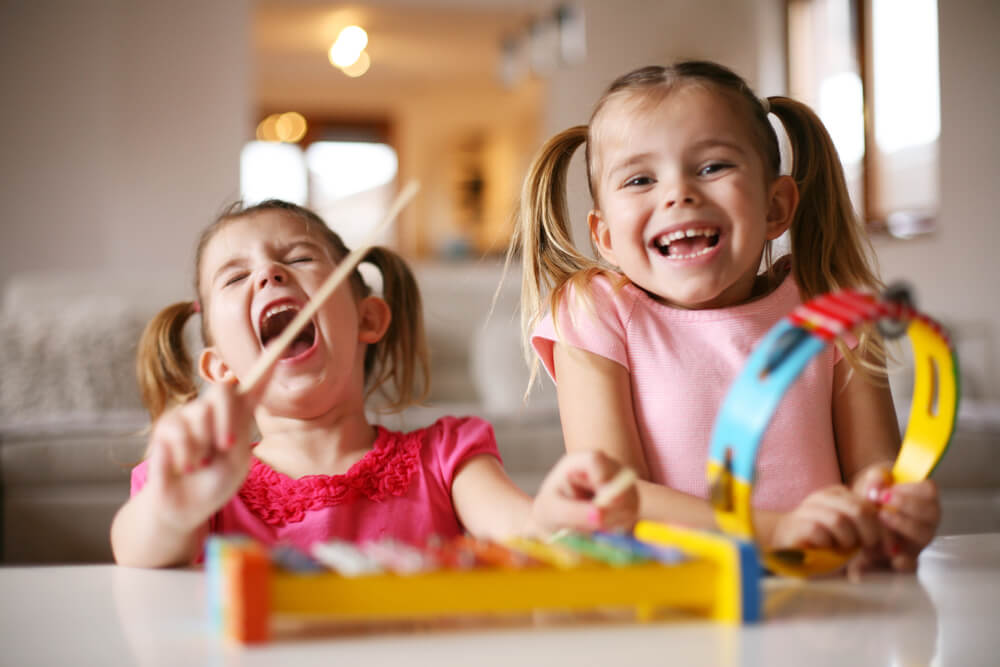
Personal-social growth begins with attachment—the secure bond between a child and caregiver. This early relationship helps regulate stress and builds the foundation for empathy and social interaction.
- Infancy (0–12 months): Babies smile in response, look at their hands, and approach toys. They hold bottles to feed themselves at roughly six months and eventually drink from a cup.
- Toddlerhood (1–2 years): Children begin to imitate others, use a spoon and fork, help with housework, and “feed” toys.
- Preschool/Kindergarten age (3–6 years): Friendships and cooperative may play emerge. Children dress and brush their teeth without assistance.
When to Seek Guidance

Missing an isolated milestone doesn’t always indicate a problem, but persistent or multiple delays may signal a developmental disorder.
Nelson Essentials of Paediatrics highlights the importance of developmental surveillance at standardised health screenings at 9, 18 and 30 months. Autism-specific screenings are recommended at 18 and 24 months.
Your paediatrician may recommend a formal developmental assessment. This evaluation considers physical, cognitive, social and communication abilities, as well as family, medical and environmental factors.
Understanding the Factors That Affect Development
A child’s growth is influenced by both intrinsic and extrinsic factors. There are several that can shape developmental progress:
- Genetic and biological factors: Premature birth, metabolic disorders or genetic syndromes may alter developmental pathways
- Environmental influences: Access to nutrition, stable housing and responsive caregiving all play critical roles
- Social determinants: Chronic stress or limited educational opportunities can delay milestones
- Parental and family dynamics: Supportive, engaged caregivers foster healthier cognitive and emotional growth.
Addressing these influences early (through parental education, community programmes and medical support) can mitigate risk and promote resilience.
Why Early Help Matters
Identifying developmental challenges early opens the door to better support and brighter outcomes.
Early intervention can help your child:
- Build stronger communication skills
- Feel more confident in social situations
- Adjust to routines and changes more easily
- Thrive at home, in school and in life
It can also help you as a parent feel more confident, prepared and supported.
You don’t need to wait for a diagnosis or a teacher’s report. If your own instincts say, “Something feels different”, it’s okay to trust them and seek further guidance.
Understand the Factors That Affect Child Development>>
Explore Why an Early and Accurate Autism Diagnosis Matters for Children>>
You Take the First Step—Our Team Will Lead the Way
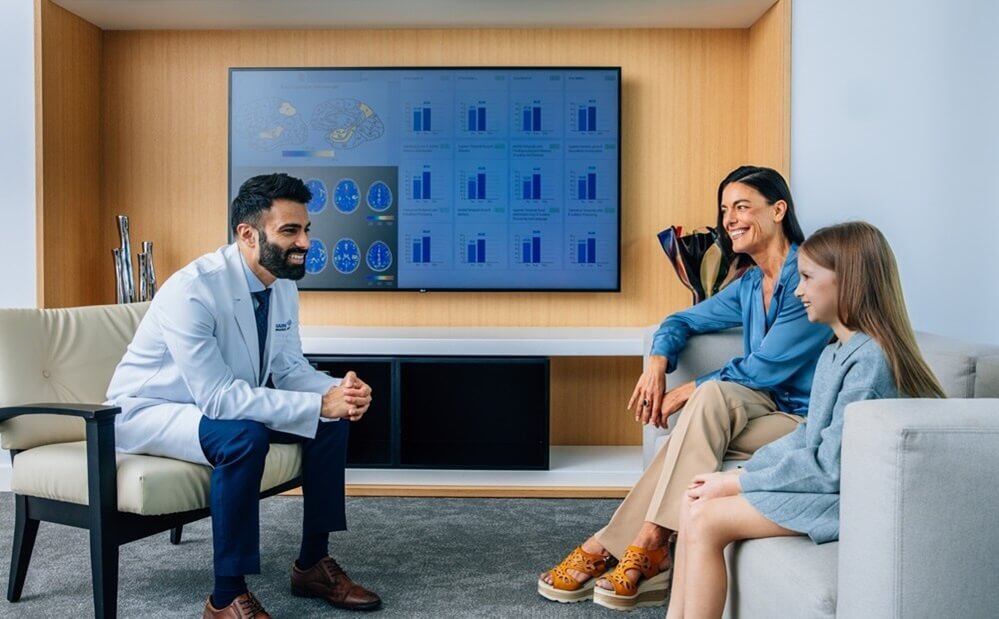
At The Brain & Performance Centre, a DP World Company, we understand how complex and overwhelming the parenting journey can be. We’re here to help you find answers and solutions to your child’s health and well-being.
Our state-of-the-art medical clinic offers comprehensive youth assessments. These examinations do not simply seek to diagnose but dig deeper to unveil the why behind what you’re seeing.
Our youth assessments include:
- Advanced brain imaging this enables us to find or exclude abnormalities in brain form and biologic functioning
- Cognitive testing reviews your child’s brain performance, helping us to identify strengths and challenges in learning, memory problem-solving and more.
- Multidisciplinary team evaluations, including assessments by our team of pediatricians, neuro psychologists and occupational therapists.
- Personalised insights that help establish the correct diagnosis, and guide the next steps in creating individually tailored support plans.
This approach helps our medical team obtain a holistic, big-picture perspective on your child’s health, creating a solid diagnosis, identifying treatable conditions, providing treatment plans that may significantly improve your child’s development and quality of life.
Our treatment programs address the following conditions:
- ASD treatment
- Traumatic brain injury and post-concussion syndrome treatment
- Paediatric stroke recovery
- TBI and PCS recovery
- Cerebral palsy programme
- Conditions associated with post encephalopathies
We offer a partnership centred on your child’s health and well-being. With data-backed tools and a multidisciplinary medical team, we have what it takes to help your child become the best version of himself.
Explore all of our Treatment Programmes for Youth>>
Let’s Take the Next Step Together
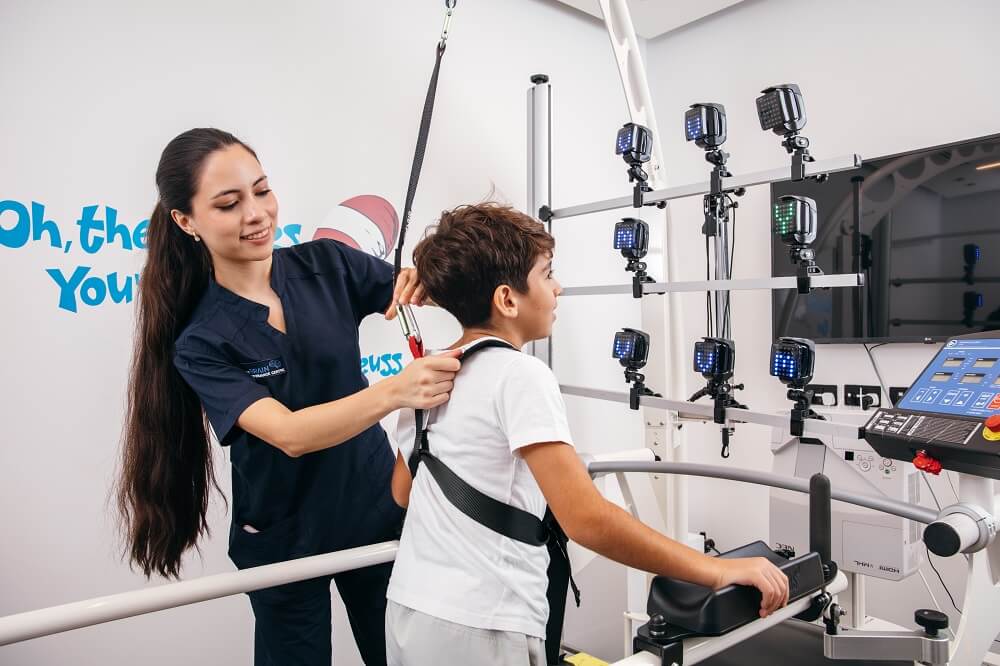
Being a parent is a journey full of questions and worries—but also strength and courage. You’ve already done something incredible by noticing, asking and seeking guidance.
At The Brain & Performance Centre, we don’t believe in a one-size-fits-all approach. Every child’s development and needs are unique. That’s why we walk beside you with care, compassion and a plan made just for your child. It’s not just about catching up to peers, it’s about unlocking your child’s full potential.
